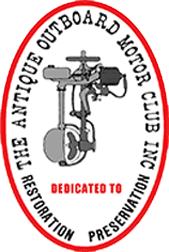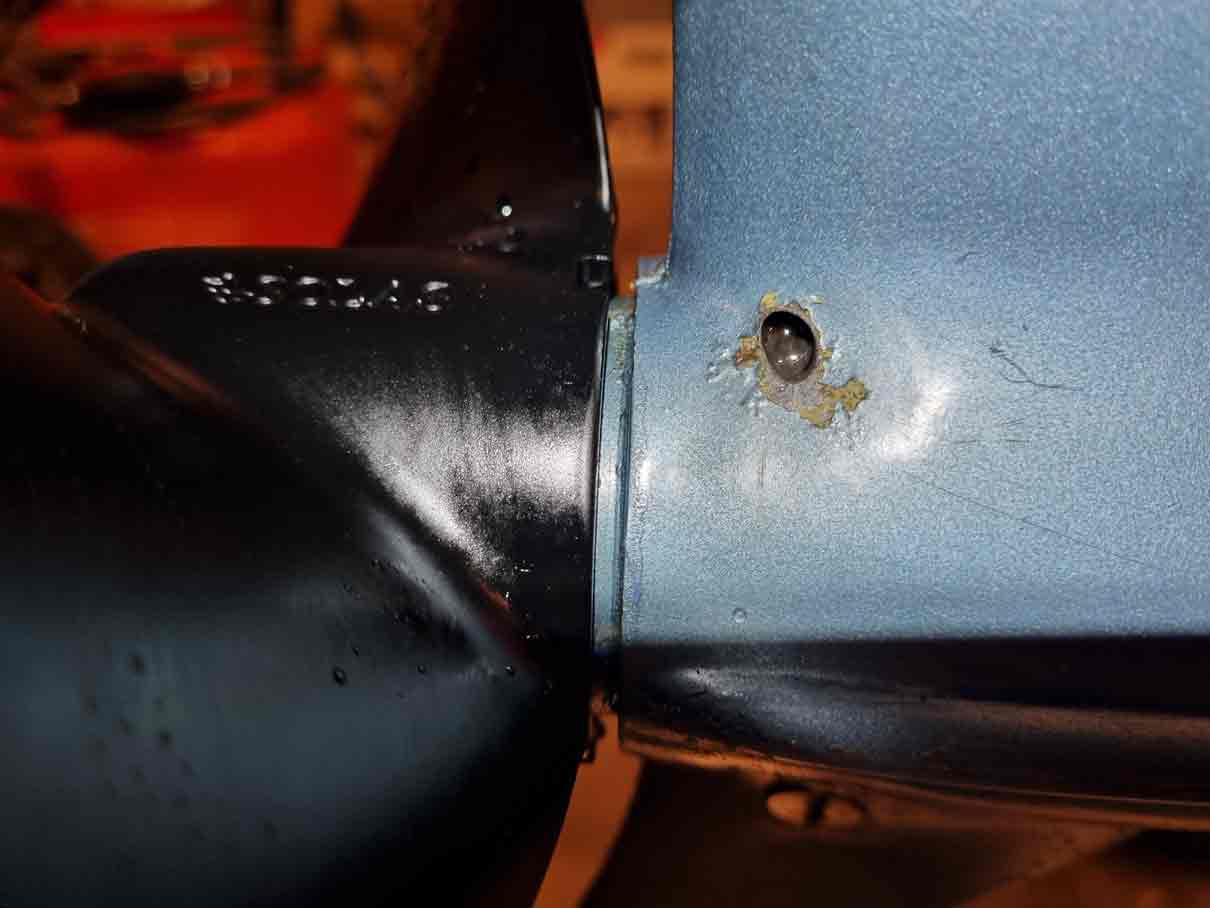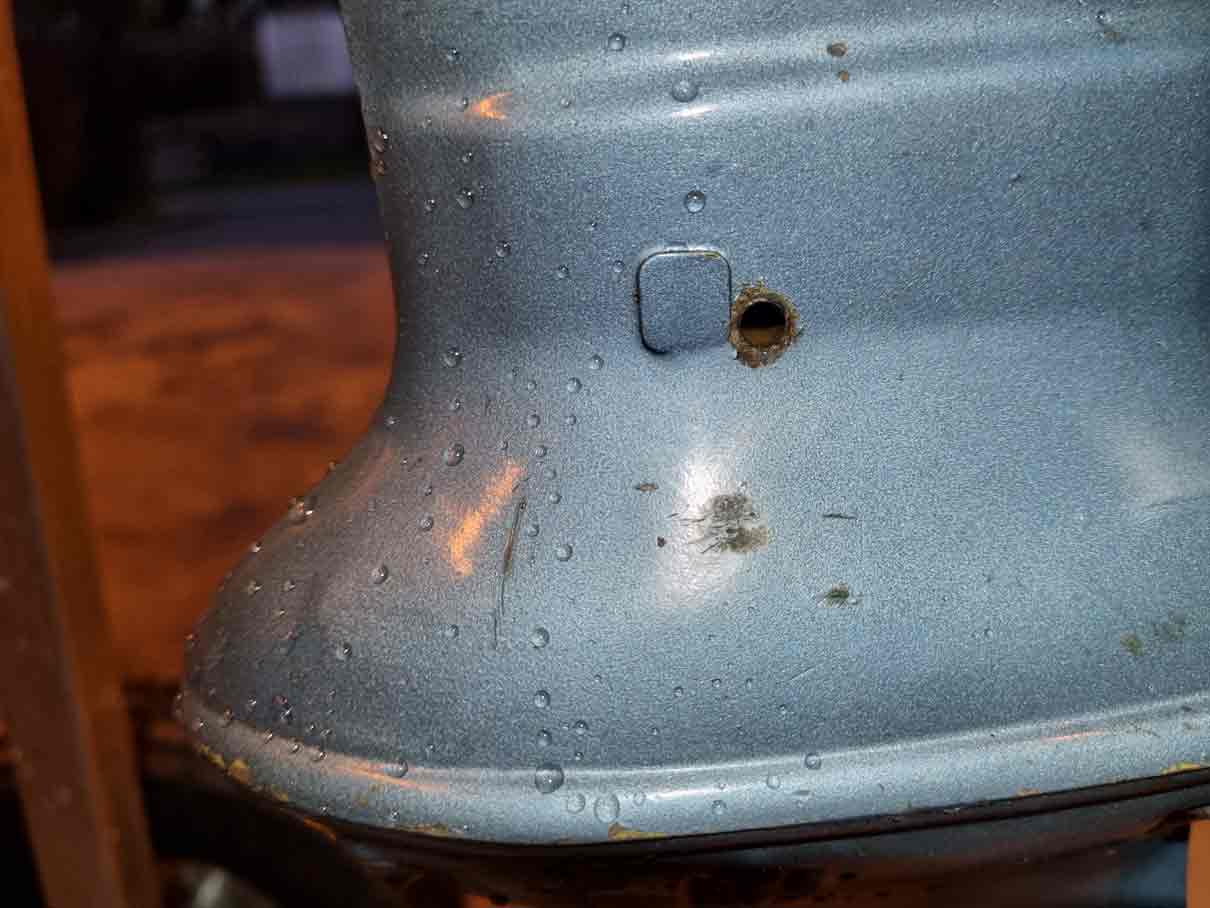Home › Forum › Ask A Member › Re-built Evinrude 18 HP 1960 won’t start
- This topic has 33 replies, 14 voices, and was last updated 2 years, 7 months ago by
crosbyman.
-
AuthorPosts
-
November 29, 2022 at 6:45 pm #269488
Talking about pistons reminds me of something that happened when I ordered new pistons and rings on ebay. I looked up part numbers on marineengine.com for the 1960 model 15032 (18hp) and found #385338 (piston std). The part numbers for rings on marineengine.com was not recognized as valid part numbers, so for some reason I ordered ring set #378415 (rings std).
It turned out that the rings I received (3378415) had 3 rings in each set, and they did not fit the pistons I had received, which only had 2 grooves. In addition the two grooves were different. The upper was slanted. The rings I received did not fit the pistons. So I had to find out what pistons I had become from the seller. After some searching on marineengine.com I found out that some later models 18hp around the year 1970 had only 2 rings. I found out what the part number those two rings were, and ordered them. They did fit my pistons, so now I have installed pistons #385338 and two rings on each piston (It might be #383473, but I haven’t made a note of the part number, so I’m not sure).
Long story short: I now have pistons in my 1960 18 hp with two rings on each piston, and they fit in the cylinders. Now I wonder if this could cause any problem like the engine does not start?
OK, let’s talk more about this. You bought the pistons/rings on ebay. You didn’t get them from marineengine.com using the original part numbers? Ebay sellers oftentime mismark parts, or make false assumptions about “what will work”. Another big mistake made my many is “reverse superceeding”. In other words, marking older parts with newer part numbers, this is a mistake that can bite you in the butt big time.
It sounds like someone has sold you newer style pistons that used the two ring “pressure backed” piston rings for your engine. I’m not saying this won’t work, just saying you can get in trouble making switches/assumptions like this. If OMC wanted these new style pistons to be used as replacement parts for older three ring piston units, the piston part numbers would have changed/superceeded to a “kit” part number. This kit would have come with directions, along with the two pressure backed rings that are to be used on the newer pistons.
I’m thinking the no start situation is due to something much simpler though. That choke detent is a poor design and a constant issue for hard cold start situations. You mention there is good spark on both cylinders but are you sure the leads are connected to the correct plug? It is easy to get this mixed up when reworking the mag plate with new wires, etc. The engine won’t run at all with timing off 180 degrees, although it might backfire loudly while trying to start it.
I guess I would take the advice about priming the cylinders with fresh fuel/oil, then trying to start it. If the engine still makes no attempt to fire, then I would swap plug leads and retest.
November 29, 2022 at 11:52 pm #269507and….. what is fairly good compression …… recheck and post #s !!
Joining AOMCI has priviledges 🙂
November 30, 2022 at 6:01 am #269508I know what Fleetwin is saying and totally agree with him, about reverse supercession. However, in this particular case, it would SEEM TO ME, that those pistons and rings would work. One stupid question, though…You do have the pistons in the block the right way, in the picture, but that is not a picture of the final installation, because BOTH pistons are at the tops of the bores….
As for your ignition wires, it may be tricky to see, but the forward-most ignition coil is the top cylinder and the rear-most coil is the bottom cylinder. If you are careful, you should be able to trace the wires without taking anything apart.
An actual compression test, with readings, would be good to know, before you go down the wrong path.
Putting a small amount of fuel/oil mix in the cylinders and seeing if it fires, like Buc and Fleetwin say, is a good idea. If it does fire, then try squirting some directly into the bore of the carb and see if it again fires briefly. If it fires with fuel directly in the cylinders but NOT in the carb, then you may have sealing issues with the crank case or reed valve issues. But one step at a time.
Long live American manufacturing!
November 30, 2022 at 7:49 am #269512Hi fleetwin and all others. Thank you very much for participating in these issues. I really appreciate every single post here. You are all fantastic, and it really helps this old guy(me) in making the right decisions and solving problems.
I was very happy when I found marineengine.com, because there’s not really many parts to find by dealers here in Norway for such an oldtimer like my eighteen horse from 1960. So I thought I could purchase from marineengine who had mostly everything I needed. But I was wrong. Marineengine does not sell to Norway. Period. What?!! The didn’t even answer my emails because my email address was Norwegian. So I had to find other ways to purchase parts. Purchasing on ebay is not what I want, but sometimes I have no other choice.
The pistons marineengine.com have on their parts catalog for my 1960 18hp mod 15032 is #377262 and #385338. At the time of purchase #377262 was unavailable, so the only choice was to purchase #385338. But they does not sell to Norway, so I was stuck with ebay. I found #385338 on ebay by a seller in Cypros in Europe, and according to an experienced friend who had bought lots of items from this seller, my friend have had very good experiences with this seller and recommended him. So I ordered two pistons #385338 and two sets of rings #378415. It’s my own fault to order wrong rings.
#385338 has only two grooves. This pistons is also used many years after 1960 on 18 hp. I received two sets of three identical rings, and not two sets of two different rings, because I ordered the wrong part number for rings. So I don’t blame the seller on ebay. He just sent what I ordered.
Now the pistons #385338 is provided by marineengine as pistons for the 1960 modell I have. They are on the marineengine Power Head parts page for my model 15032, although not in stock. So I feel confident now on using these two pistons #385338 with the special rings which I was lucky to acquire later by a dealer in Sweden. Those two pistons are now correctly installed, and should work just fine since marineengine have them on their parts page for my power head.
The image I posted previously show both pistons in the same position, and that’s because the rods are not connected to the crankshaft at the time the image was captured. Since the rods are not connected to the crank shaft it’s possible to slide the pistons up and down the cylinders in parallell so they are in the same position.
So my little worries concerning the pistons and rings are now gone.
Now to the other possible problem, connecting ignition leads to the right cylinders. I studied so many resources (youtube, repair manuals and other stuff) to connect coils to the right cylinders. I have installed new coils, condensers and points on the armatur plate. The ignition leads and spark plug caps are all new too. When I did this job I followed the recommendations I found in the sources of info I had. The two ignition wires that goes to the spark plugs are installed in this way:
Wire to the top cylinder is connected to the first coil the wires meet when they are travelling onto the armaturplate. Wire to the bottom cylinder goes further around the edge of the armaturplate about 180 degrees and then disappears into the second coil. So the ignition wire to the second coil is the longest of the two wires. The wire to the top cylinder is labeled with a small metal clip with the letters “UP” on it to not interchange the wires by accident. This is how I did it, and correct me if I’m wrong.
I have tested sparks on both cylinders with two spark testers, and they both show good sparks when I rotate the flywheel. I feel confident that the ignition is correct.
I did a search on the Internet to find the Detent #204490 which is holding the choke lever in the ON position. It seems that this part is gone out of production, but it still exist on ebay. But who would pay USD $42.50 pluss shipping and taxes for a little plastic piece? It’s crazy. So luckily I found a dealer here who had one piece. And the price was ok too.
Well. Now I will spray a little fuel in the carburetor intake and try starting again. Just one final question. How much throttle do I need to set before I begin to pull the starter handle?
November 30, 2022 at 10:06 am #269516
Check and see if the points that the coil is
connected to open and close when the
piston gets to the top of the cylinder that
it’s going to.
Tubs.A "Boathouse Repair" is one that done without having tools or the skills to do it properly.
November 30, 2022 at 10:16 am #269517Start or just a bit higher should do … on the throttle
plug wires… FRONT coil goes to the top plug … confirm !
if you spin the FW with a drill can you you feel the air sucked in the carb face …?
did you clean out & blow the idle circuit passages : side passage to the top,… place gasket #47 in line with side channel …. clean out the idle drip holes under plug #27
needle 35 “openned out” enough per book to let fuel reach the top drip chamber under plug 27 and be sucked inside the engine
to confirm fuel properly fills the carb… remove needle#60 pump the bulb and fuel should spill out… in a rag placed under the carb pump the bulb for more fuel . replace and adjust needle
Joining AOMCI has priviledges 🙂
1 user thanked author for this post.
November 30, 2022 at 10:49 am #269521I’ve been there and done that (read: basic errors) while tinkering with my outboards. I thought I might share them with you:
Ignition:
a) Make sure that the lead feeding the top cylinder come out of the coil sitting forward on the armature plate.
b) Test your spark with the plugs installed using a gap spark tester. Testing spark by holding the plug near the block or with a neon testers cannot let you properly evaluate the strength of the spark. The fact that you changed the points and condensers does not guarantee sufficient spark given the low quality of replacement parts these days (even on OEM).
Fuel:
a) First, make sure you use fresh fuel and very importantly that your tank fuel line has been purged of that old fuel trapped in there since last year.
b) Before your cranking joust,squeeze the fuel priming bulb continuously while carefully inspecting all lines , components and connections from the tank all the way to the carb, making sure all is tight.
c) After priming the fuel system, crank the motor (give yourself a break and use an 1/2 inch electric drill connected to the flywheel nut). If it doesn’t start, remove and inspect the plugs. The electrode area should be wet / smell of gas. If not, check the engine fuel connector for a possible blockage or a blockage/kink in the fuel lines all the way to the carb. You may also disconnect the fuel pump outgoing line and see if it spits out while squeezing the primer pump and while the motor is being cranked, if not, rebuild the fuel pump.
d) If that doesn’t resolve the problem, rebuild the carb (yes, another time) and once it’s off remove the intake and reed valve/plate assembly and make sure the reeds close tight against the plate (hold it up to a light source, none should shine through). Leaking reed valves go undetected by the compression check but will prevent a 2-stroke to fire up.
Keep up the spirits !
There are no old outboards, just machines so well built, they have outlasted their owners !
November 30, 2022 at 11:18 am #269523Just a stray thought, but are you pulling the motor over hard enough? With the eighteens, I find you have to pull on the rope like you mean it to get them started.
-
This reply was modified 2 years, 7 months ago by
 Mumbles.
Mumbles.
November 30, 2022 at 1:11 pm #269526Hi everyone! Success!
The 18 horse started and is working nicely. I did spray a little fuel mix in the intake on the carb and the engine started. I had to adjust high and low speed to get it running nice and steady.
I’ve run it for an hour on a little under half throttle and in forward gear. Water is coming out of the opening in the exhaust tube as expected. It runs nice.
After shutting down the engine and draining the water from tank, I discovered some oil in the water. There were also oil outside on the exhaust tube under the exhaust port and also oil on the outside of the gear case and skeg. I discovered to small holes on the gear case and there were oil in the openings of these holes. I got a bad feeling that those two holes should not be there. Could anyone comment on the holes?
November 30, 2022 at 1:20 pm #269530Sorry. I forgot to reply Crosbyman. fairly good compression.. sorry, I should have said very good compression. In the end it turned out that everything worked as expected.
Thanks for taking time to write posts on this. I love this place. -
This reply was modified 2 years, 7 months ago by
-
AuthorPosts
- You must be logged in to reply to this topic.



